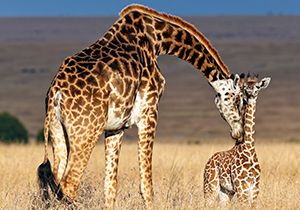Welcome to Facts Vibes! Explore the amazing world of the African savanna with our fun facts article. From the majestic wildlife to unique ecosystems, get ready to dive into the fascinating and diverse landscape of this extraordinary region.
The Fascinating World of the African Savanna: Fun Facts and Wonders
The African Savanna is a fascinating ecosystem that is home to a diverse range of wildlife, plants, and natural wonders. Spanning across several countries in Africa, the savanna is characterized by its expansive grasslands, scattered trees, and seasonal rainfall patterns. One of the most striking features of the African Savanna is the presence of iconic animals such as lions, giraffes, elephants, and zebras. These magnificent creatures have adapted to thrive in this unique environment, forming an integral part of the ecosystem. Moreover, the savanna is also rich in cultural heritage, with indigenous communities preserving their traditions and livelihoods within this extraordinary landscape. As visitors explore the savanna, they are met with a tapestry of beauty and adventure, making it a destination that continues to captivate and inspire all those who encounter its magic.
Most popular facts
The African savanna is home to a diverse range of wildlife, including elephants, lions, giraffes, zebras, and wildebeest.
The African savanna is home to a diverse range of wildlife, including elephants, lions, giraffes, zebras, and wildebeest.
Baobab trees, also known as “upside-down trees,” can be found in the African savanna and can live for thousands of years.
Baobab trees, also known as “upside-down trees,” can be found in the African savanna and can live for thousands of years.
The Maasai people of East Africa have traditionally lived in the savanna and are known for their distinctive red clothing and intricate beadwork.
The Maasai people of East Africa are known for their distinctive red clothing and intricate beadwork.
The African savanna experiences distinct wet and dry seasons, leading to dramatic changes in vegetation and wildlife behavior.
The African savanna experiences distinct wet and dry seasons, leading to dramatic changes in vegetation and wildlife behavior.
Acacia trees are a common sight in the savanna and provide food and shelter for many animals, including giraffes and elephants.
Acacia trees are a common sight in the savanna and provide food and shelter for many animals, including giraffes and elephants.
The savanna is characterized by vast grasslands, scattered trees, and seasonal rivers and streams.
The savanna is characterized by vast grasslands, scattered trees, and seasonal rivers and streams.
Wildebeest migrations, where millions of these animals move in search of greener pastures, are a natural spectacle in the African savanna.
The wildebeest migrations are a natural spectacle in the African savanna, where millions of these animals move in search of greener pastures.
The African savanna is under threat from human activities such as agriculture, urbanization, and poaching.
The African savanna is under threat from human activities such as agriculture, urbanization, and poaching.
The savanna is also home to various bird species, including ostriches, eagles, and vultures.
The savanna is home to a variety of bird species, including ostriches, eagles, and vultures.
Many indigenous tribes and cultures call the African savanna home, each with its own unique customs and traditions.
Many indigenous tribes and cultures call the African savanna home, each with its own unique customs and traditions.
The savanna is a vital ecosystem that supports a delicate balance of predators and prey, herbivores and carnivores.
The savanna is a vital ecosystem that supports a delicate balance of predators and prey, herbivores and carnivores.
The termite mounds found in the savanna can reach impressive heights and serve as crucial habitats for other animals.
The termite mounds found in the savanna can reach impressive heights and serve as crucial habitats for other animals.
The African savanna covers a vast area, spanning multiple countries including Kenya, Tanzania, South Africa, and Botswana.
The African savanna covers a vast area, spanning multiple countries including Kenya, Tanzania, South Africa, and Botswana.
Wildfires are a natural part of the savanna ecosystem and play a role in shaping the landscape and clearing old vegetation.
Wildfires are a natural part of the savanna ecosystem and play a role in shaping the landscape and clearing old vegetation.
Ecotourism in the African savanna provides economic opportunities for local communities while promoting wildlife conservation efforts.
Ecotourism in the African savanna provides economic opportunities for local communities while promoting wildlife conservation efforts.
In conclusion, the African savanna is a fascinating ecosystem filled with remarkable wildlife, unique vegetation, and intriguing natural phenomena. Exploring the fun facts about the African savanna has provided a deeper understanding of the delicate balance of life in this extraordinary habitat. Whether it’s the migration of wildebeest, the towering presence of giraffes, or the beauty of acacia trees, the African savanna continues to captivate and inspire awe. It is a place of immense beauty and profound significance, and its diversity and complexity make it an essential part of our natural world.
